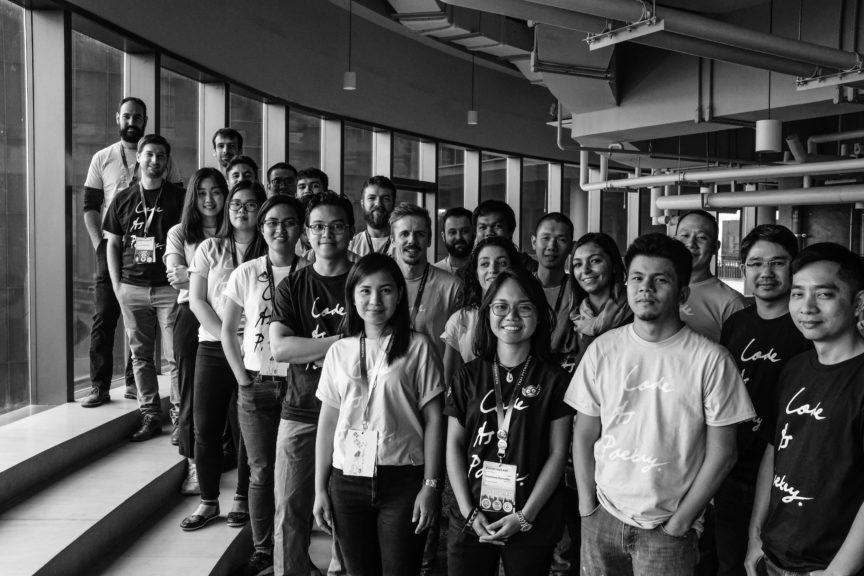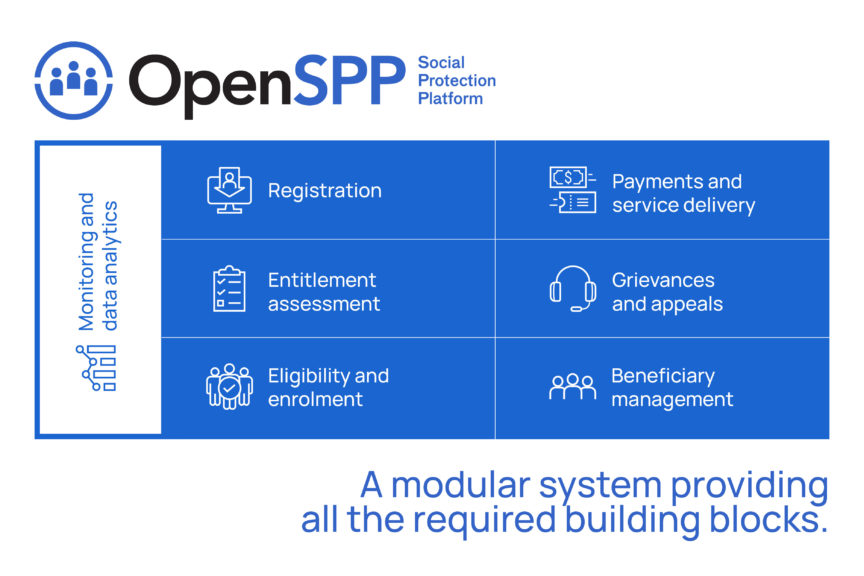The Catalog of Digital Solutions aggregates and reflects the incredible work being done across the digital development space by people such as Greg Martel and Jeremi Joslin.
There are many existing digital solutions that have been designed to address development challenges. However, these solutions are often disconnected, and organizations end up duplicating efforts instead of leveraging proven solutions. These inefficiencies delay bringing real-world impact to those in need.
Out of this observation, DIAL created the Catalog of Digital Solutions, with the goal of supporting informed decision-making and greater coordination in digital investments. The Catalog aggregates and reflects the incredible work being done across the digital development space by people such as Greg Martel and Jeremi Joslin.
Greg and Jeremi are the Co-founders of Newlogic, an impact-driven software consultancy, headquartered in Singapore with offices throughout Southeast Asia.
If you’re looking to better understand the benefits of digital public goods (DPGs), the value of coordination across DPGs, and how to get involved, keep reading.
How does your organization currently work with DPGs and the greater open-source community?
We are four co-founders, three of whom are engineers who have worked for the private sector and also have strong backgrounds contributing to well-known open-source projects. Since day one, we’ve dedicated full-time employees to open-source.
We mainly work for humanitarian agencies and governments, but also design and develop solutions for private sector clients, whereby the code belongs to them. An interesting scenario, that has happened more than a few times, is when a client has a need, but they do not have the budget to meet it. If we think it is an interesting use case that may apply to other organizations, we’ll develop it as an open-source project when we have the bandwidth. The great thing about this is that when we know there is a need for it, we know it will be used immediately and we will receive community feedback. If the client wants us to keep developing it, they’ll pay us to contribute to the open-source project.
What results have you been able to achieve so far?
In 2018, we launched ID PASS, an open-source toolbox for designing and developing digital identity solutions. We developed an offline biometric solution that enables instant verification of identity documents as well as onsite verification using handheld Android devices. It is a fully open-source solution, based on open standards. So far it has aided over 5,000,000 beneficiaries.
Smart Scanner is another great example. A client was going to spend hundreds of thousands of dollars on proprietary software to read identity documents via MRZ codes (the lines at the bottom of the photo page of a passport). The software was extremely expensive for something not that complex to implement. We saw the value of automating the process – it is faster and can prevent manual errors. We decided to develop a solution in open-source, which is now used for many different types of identity documents throughout the world, allowing for the registration of millions of people.
 The Newlogic team
The Newlogic team
What initially brought you to the Catalog?
We first discovered the Catalog in 2018 at the Digital Tech for Resilience Workshop in Bangkok. We have been using the Catalog and actively providing feedback since then. There are many other catalogs out there, but the amount of effort that is put into DIAL’s Catalog is impressive. Even back in 2018, it was quite comprehensive, and it remains a central source for us to discover new projects and technologies.
For the work we do with DPGs, it is essential for us to know about the whole ecosystem, who is working on what, and where. Even if it’s not directly related, it can be inspiring for our own projects. This is the beauty of open-source: people share what they have, and it contributes to the bigger picture.
Can you tell us about some of the projects you’re working on?
- INJI: We are working with the MOSIP team to build a mobile and identity wallet that allows users to share their credentials with public and private entities. One of the first use cases we are looking at is for sharing verifiable credentials with banks. The app was developed with one specific country in mind, but we already have several countries interested. One of the main features of INJI is that it’s an identity wallet that can work offline for peer-to-peer verification. It doesn’t require going through a server or sharing details about the information exchange.
- OpenSPP (Open-source Social Protection Platform): is a scalable, integrated and digital social protection information system. It is modular and provides all the required building blocks including registration, entitlement, eligibility, payments and service delivery. The first country implementation has just started – a key milestone for the project.
 What is the biggest misconception you hear around DPGs?
What is the biggest misconception you hear around DPGs?
The first is that open-source means there is no security. When actually, it’s the same as proprietary software; some have good security, some have bad security. The truth is that with much more transparency, there is better security. You can look at the code yourself (or ask someone qualified) and assess the quality of it. The community as a whole can comment and share information about it. Alternatively, in proprietary software, it’s usually hard to see the source code and to know if there are security issues.
The second misconception is that open source is free. Sure, you can take the software for free, you can install it yourself, and you don’t have to pay anybody anything. But someone had to pay to develop it in the first place. Someone has to maintain it. The benefit is in sharing everyone’s resources to build a reliable, scalable, and interoperable solution.
This remains a major challenge. How do we finance these projects and make them sustainable for the long run? When things are funded per project, as many are, as soon as the project is finished, it dies. Great coordination of funding for open-source projects would go a long way in pushing the entire ecosystem forward. This is why it is so important that we coordinate between DPGs.
The biggest advantage is not that open-source can be free, but more the freedom to modify the software. Sovereignty is a huge benefit. You don’t like your vendor, you can change your vendor without scraping the work they’ve done. You don’t like part of the code, you can rewrite it.
As you look towards the future, what are you excited about?
What is very exciting right now is the number of initiatives for the development of DPGs and their adoption by governments and organizations. The UN roadmap now says this is a priority, the European Union and several global governments are saying the same. Donors on large-scale projects saying they want the projects they finance to be new DPGs or contributing to existing ones. We see the work DIAL does with the DPG Charter and GovStack at the forefront moving things in the right direction.
Many advocate for interoperability, which is essential. But it takes work to make the different pieces of the puzzle work together. We believe that there is going to be a big need for teams like ours, who are specialized in integrating DPGs and making them work together, making the implementation of large scale projects possible. We are now in discussions with OpenG2P, OpenCRVS, CORE-MIS, MojaLoop, and Payment Hub to create a joint demo for use cases around social protections. Nobody is paying us to do this for now, it’s part of our contribution to the greater cause.
A lot of DPGs are in their infancy, and this is just the beginning. For us, big open-source believers, these are truly exciting times.
****
Interested in being featured in our next user spotlight?
Reach out to info@solutions.dial.community



